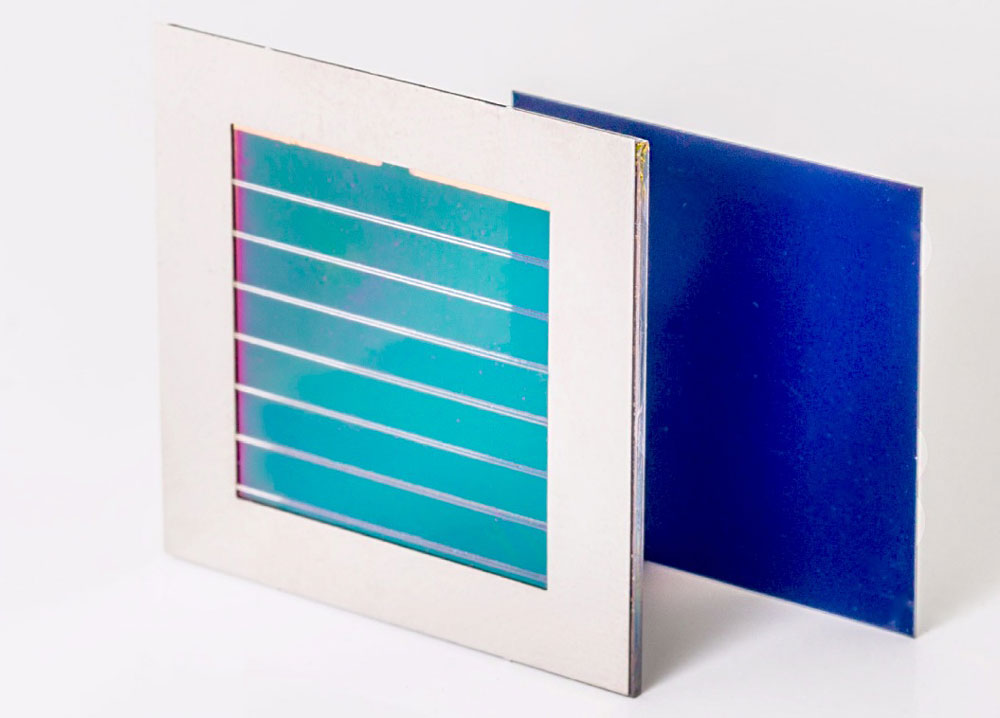
Belgian research hub Imec has achieved a power conversion efficiency of 23.9 percent with its 4cm2 perovskite/silicon tandem photovoltaic module. Reaching this level, Imec is the first to achieve a module-on-cell stack that outperforms the standalone silicon solar cell.
Perovskite solar cells have many desirable properties, as they can achieve a high power conversion efficiency, are inexpensive to produce, and have a high absorption efficiency in sunlight. By stacking the perovskite solar cells or modules on top of Si solar cells, power conversion efficiencies above 30 percent can potentially be achieved, surpassing the efficiencies of the best single junction silicon solar cells.
In 2016, Imec presented for the first time a semi-transparent perovskite module stacked on top of an interdigitated back-contact (IBC) crystalline silicon solar cell in a four-terminal tandem configuration, achieving an overall power conversion efficiency of 20.2 percent on an aperture area of 4cm2. Like the latest announcement, this was developed in collaboration with Solliance, a partnership of R&D organisations from the Netherlands, Belgium and Germany working on thin film PV.
Imec is now reporting a significant improvement of this technology resulting in a record high power conversion efficiency for the module-on-cell stack of this size.
“Two innovations are key to this achievement,” explained Tom Aernouts, group leader for thin-film photovoltaics at imec and perovskite PV program manager at Solliance. “First, a different perovskite material (CsFAPbIBr) was used, largely improving the stability and conversion efficiency of the 4cm² semi-transparent perovskite module to 15.3 percent. Second, the architecture of the stack was optimised for minimal optical losses by adding an anti-reflection texture on top of the module and a refractive index matching liquid between the perovskite module and the silicon solar cell.”
The perovskite/silicon four-terminal tandem was realised with matched aperture areas as large as 4cm2 for the perovskite module and the silicon solar cell.
“Having matched areas of this size makes the fabrication technology more attractive to the solar cell industry,” commented Aernouts. “For reference, we have also fabricated a stack of a small perovskite cell (0.13cm2) on top of an IBC c-Si cell (4cm2). In this configuration, the power conversion efficiency of the small semi-transparent perovskite cell is 16.7 percent, outperforming the larger 4cm2 perovskite module due to better perovskite layer properties. Although less attractive from an industrial point of view, the overall power conversion efficiency of this cell-on-cell stack is as high as 25.3 percent.”
